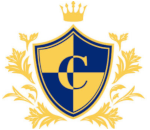In Sri Lanka, education is a top priority. Its aim is to promote democracy with regards to education; moral, physical and spiritual development, and lifelong learning. It should also help to develop deeper understanding of the environment, culture and the religious heritage of Sri Lanka, whilst producing a population who have the skills necessary to meet the country’s needs.
Sri Lanka has a literacy rate of 92%. This is higher than anywhere else in Asia, and is especially high for a developing country. The enrolment rate in public primary schools reached 99% in 2011, which also highlights the success of the Sri Lankan promotion of education.
Education is regulated by the government, or more precisely specific ministries within the government, and all levels of education are offered free of charge. Primary and Secondary schools are regulated by the National Ministry of Education. The Universities are overseen by the Ministry of Higher Education.
It is possible to find several different types of school and centres for learning.
There are three different kind of schools:
- Government owned schools (public schools)
- Private schools
- International schools
Government schools can be further divided as follows:
- National Schools
- Provincial Schools
- Piriven (Buddhism school)
The education system of Sri Lanka divides the educational process into 5 main steps:
- Primary school
- Junior Secondary*
- Senior Secondary* (*Both Secondary School)
- Collegiate
- Tertiary


